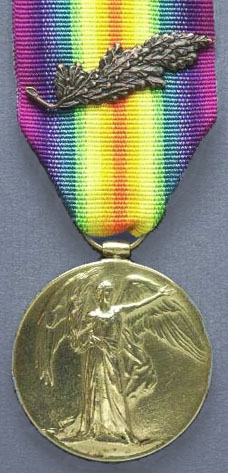Difference between revisions of "Mentioned in Despatches"
From Our Contribution
(→World War II recipients) |
(→Those who came to the district after WW1) |
||
| Line 34: | Line 34: | ||
*[[Spencer Gwynne DCM MID]] | *[[Spencer Gwynne DCM MID]] | ||
*[[Reginald Grove Sexty MID]] | *[[Reginald Grove Sexty MID]] | ||
| + | *[[James Alexander Kierath]] | ||
==World War II recipients== | ==World War II recipients== | ||
Revision as of 02:08, 5 May 2020

Image attribution Rimbawan at English Wikipedia CC BY 3.0, via Wikimedia Commons
Contents
Eligibility
During WW1, the Commanding General of the British & Commonwealth Forces periodically reported on the progress of the War.
While the despatch was addressed to the King and Parliament, it was also published in the London Gazette. Relevant sections were later published in the Commonwealth Gazette in Australia.
Soldiers of the British Empire or the Commonwealth of Nations who are mentioned in despatches, but do not receive a medal for their action, are nonetheless entitled to receive a certificate and wear a decoration.
For 1914–1918 and up to 10 August 1920, the decoration consisted of a spray of oak leaves in bronze that was worn on the Victory Medal.[1]
This decoration was only established in 1919, but it had retroactive effect.
Importantly, an MiD was one of only two ways that a soldier could be reward posthumously, the other being the Victoria Cross. Therefore if the soldier died in an action, and it was though that other than for his death, he would have been awarded a bravery award other then the Victoria Cross, then he could be Mentioned in Despatches.
Description
The decoration consisted of a spray of bronze oak leaves which was placed on the ribbon of the Victory Medal..
World War I recipients
- Edgar Copley Adams MID
- James (Roy) Braidwood MM MID
- William Edward Butcher MM RMG MID
- Thomas Carberry MM MID
- George Conway MID
- Albert John Egan MID
- Hilton Ward Ennis MID
- Hobart Douglas Firns MID
- George Henry Martin MM MID
- Ernest Selkirk MID
- Harold Shepherd MID
Those who came to the district after WW1
World War II recipients
- ↑ Duckers, Peter (2010) "British Gallantry Awards 1855 – 2000." Oxford: Shire Publications. p. 54. ISBN 978-0-7478-0516-8.